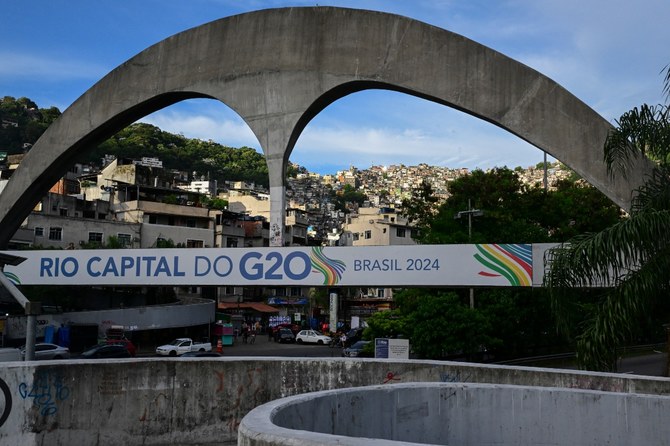Hazar Caracalla
Record debt levels and increasing debt servicing costs, exacerbated by successive shocks since 2020, have placed about half of low-income countries in, or at an elevated risk of, debt distress.
Recently published data paints a stark picture of the challenges. Total debt stock accumulation has significantly outpaced gross national incomes, raising concerns about the ability of low-income countries to service their debt. The International Monetary Fund estimates that, for a typical low-income borrower, external debt servicing costs — a key indicator used in the framework for assessing debt sustainability — are about two-and-a-half times higher than a decade earlier. The World Bank’s 2023 “International Debt Report” projects that debt servicing costs on public and publicly guaranteed debt will increase by nearly 40 percent during 2023-24. Over the next two years, low-income countries need to refinance annually about $60 billion in external debt owed to multilateral, official and private creditors, according to the IMF.
These momentous financing pressures will further constrain already severely strained domestic resources in low-income countries and crowd out critical spending to fight poverty, develop social safety nets, support human capital development and tackle climate challenges. The UN has warned that, given the significant financing shortfall, there is a risk that the gap in the outcomes of the Sustainable Development Goals between high- and low-income countries will be larger in 2030 than when the goals were universally adopted in 2015. According to IMF estimates, low-income countries need an additional $440 billion in financing through 2026, from all available sources, to put them back on a path to income convergence with advanced economies.
The situation leaves low-income countries extremely vulnerable in the face of high global uncertainty and future shocks and amplifies concerns of an emerging threat of debt crises. It underscores the need for better coordinated and more determined international cooperation to deliver a smoother debt restructuring process — one that would incentivize low-income countries to turn to it, including preemptively, when warranted.
The G20 Common Framework is a notable and promising stride toward delivering a coordinated international debt relief scheme for low-income countries. Established in late 2020 under the presidency of Saudi Arabia, the Common Framework has been endorsed by the Paris Club. Importantly, it reflects a changed bilateral creditors landscape by including major creditors like Saudi Arabia, India and China; it demonstrates a collective commitment by all bilateral creditors to coordinate and support countries to reach sovereign debt resolution using a case-by-case voluntary approach; and it seeks to achieve comparable treatment from private creditors.
Notwithstanding the important efforts devoted so far by the G20 members to make the framework deliver, the process for the four countries currently undertaking debt treatment under it — Chad, Ethiopia, Ghana and Zambia — has been slower than hoped. At the World Economic Forum Annual Meeting in January, Saudi Arabian Finance Minister Mohammed Al-Jadaan highlighted “the need to institutionalize and improve the Common Framework so it can quickly and efficiently lessen the crushing burden of debt” on poor nations. In her statement to the G20 last month, IMF Managing Director Kristalina Georgieva identified “timeliness, predictability and comparability of treatment” as issues that need to be better addressed for the framework to work more efficiently.
The Global Sovereign Debt Roundtable, set up in February 2023, is helping to advance common understanding among key stakeholders, including private sector creditors, on debt sustainability and debt restructuring challenges. However, a number of technical issues require continued engagement, including some related to restructuring perimeters and parameters. The comparability of treatment between official bilateral and private sector creditors, a key principle of debt restructuring, remains a divisive issue. Agreement on this matter would allow bilateral and commercial creditors to reach a restructuring deal jointly rather than separately and consecutively, which in turn would speed up the delivery of debt relief programs, making them more impactful.
The IMF’s role in advancing the Common Framework and shielding it from the challenges associated with geopolitical tensions will be instrumental. Through its convening power, the fund can keep all stakeholders engaged in resolving technical issues and disagreements, including by bridging the gap between official and commercial creditors. Together with the World Bank, the IMF can design solutions and provide incentives for all stakeholders to double down on their efforts, demonstrate flexibility and make bold decisions. The upcoming Spring Meetings, to be held in Washington from April 15 to 20, present an opportunity to make meaningful progress and signal that international cooperation can deliver on a global public good that benefits all.
A timely, predictable and smooth debt resolution process is necessary — but not sufficient — to provide better lives and economic opportunities to the world’s poorest nations. It needs to be accompanied by new, scaled-up and well-coordinated highly concessional multilateral financial support that can put their economies and human capital back on a solid development path. Low-income countries need to do their part by building domestic capacities and delivering on policy reforms to attract the private investments that will spur growth and generate higher sustainable incomes.







